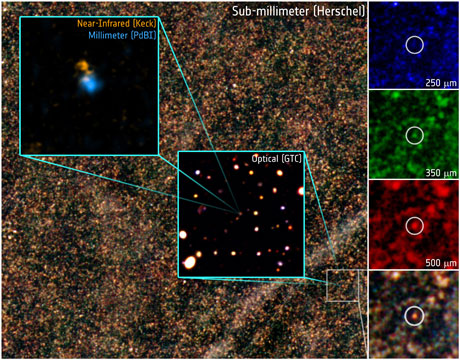 A Cornell researcher and his team have uncovered an oddity in the early cosmos: A newly discovered distant galaxy, born just after the big bang, is starting to furiously churn out stars at peak capacity - despite its young age. The unique galaxy is forming 2,000 times the number of stars as our own Milky Way.
A Cornell researcher and his team have uncovered an oddity in the early cosmos: A newly discovered distant galaxy, born just after the big bang, is starting to furiously churn out stars at peak capacity - despite its young age. The unique galaxy is forming 2,000 times the number of stars as our own Milky Way.
Apr 18th, 2013
Read more
A University of Washington astronomer has discovered perhaps the most Earthlike planet yet found outside the solar system by the Kepler Space Telescope.
Apr 18th, 2013
Read more
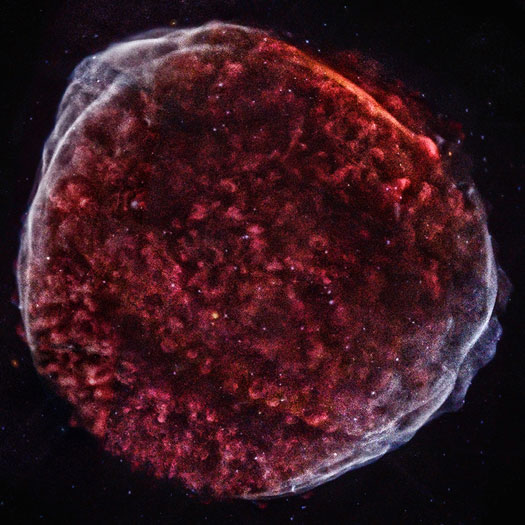 A long Chandra observation reveals the SN 1006 supernova remnant in exquisite detail. By overlapping 10 different pointings of Chandra's field-of-view, astronomers have stitched together a cosmic tapestry of the debris field that was created when a white dwarf star exploded, sending its material hurtling into space as seen from Earth over a millennium ago.
A long Chandra observation reveals the SN 1006 supernova remnant in exquisite detail. By overlapping 10 different pointings of Chandra's field-of-view, astronomers have stitched together a cosmic tapestry of the debris field that was created when a white dwarf star exploded, sending its material hurtling into space as seen from Earth over a millennium ago.
Apr 17th, 2013
Read more
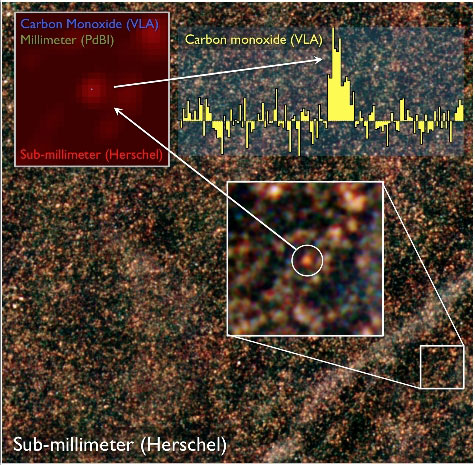 Astronomers find the most prolific star factory yet seen, in a far-distant galaxy that reveals important information about the cosmic environment in the early history of the Universe.
Astronomers find the most prolific star factory yet seen, in a far-distant galaxy that reveals important information about the cosmic environment in the early history of the Universe.
Apr 17th, 2013
Read more
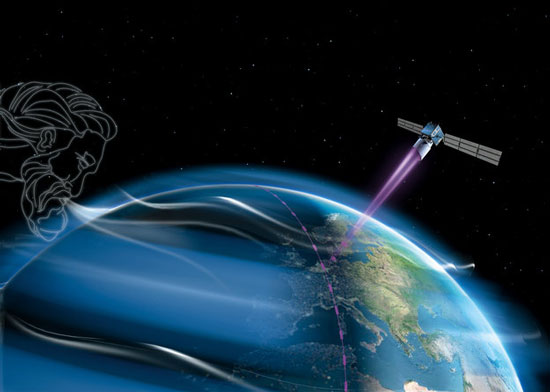 Developing new ways of monitoring Earth is always demanding, but ESA's Aeolus mission has faced some particularly difficult technical challenges. However, with the success of intense high-energy tests on its novel laser there is now light at the end of the tunnel for this unique mission.
Developing new ways of monitoring Earth is always demanding, but ESA's Aeolus mission has faced some particularly difficult technical challenges. However, with the success of intense high-energy tests on its novel laser there is now light at the end of the tunnel for this unique mission.
Apr 17th, 2013
Read more
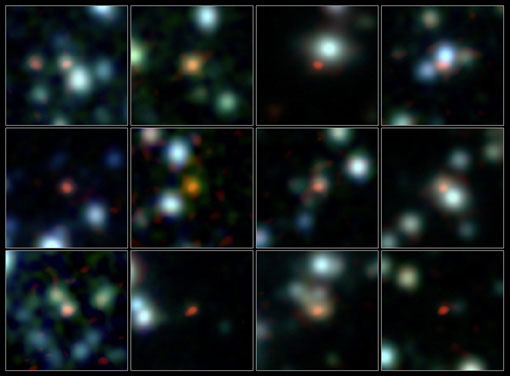 Using the compound telescope ALMA, a team of researchers has pinpointed the positions of more than 100 of the most fertile star-forming galaxies. The precise position measurements clear up a mystery about the observed productivity of these objects. They also show that previous studies of these objects have often suffered from mis-identifications, and how precise measurements like these new results avoid this kind of error.
Using the compound telescope ALMA, a team of researchers has pinpointed the positions of more than 100 of the most fertile star-forming galaxies. The precise position measurements clear up a mystery about the observed productivity of these objects. They also show that previous studies of these objects have often suffered from mis-identifications, and how precise measurements like these new results avoid this kind of error.
Apr 17th, 2013
Read more
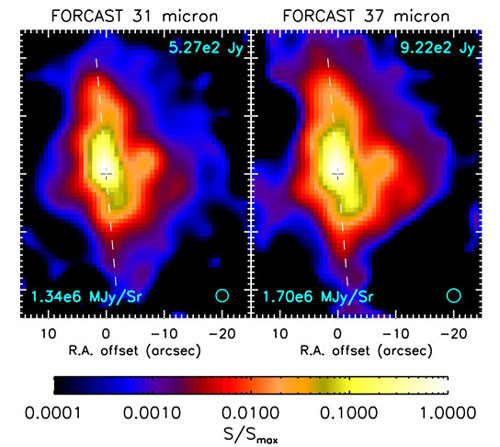 Researchers using the airborne Stratospheric Observatory for Infrared Astronomy (SOFIA) have captured the most detailed mid-infrared images yet of a massive star condensing within a dense cocoon of dust and gas.
Researchers using the airborne Stratospheric Observatory for Infrared Astronomy (SOFIA) have captured the most detailed mid-infrared images yet of a massive star condensing within a dense cocoon of dust and gas.
Apr 16th, 2013
Read more
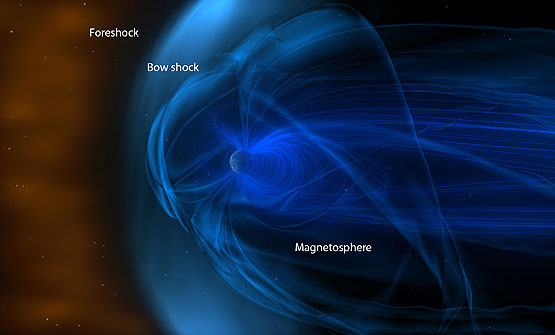 To tease out what happens at the boundary of the magnetosphere and to better understand how radiation and energy from the sun can cross it and move closer to Earth, NASA launches spacecraft into this region to observe the changing conditions.
To tease out what happens at the boundary of the magnetosphere and to better understand how radiation and energy from the sun can cross it and move closer to Earth, NASA launches spacecraft into this region to observe the changing conditions.
Apr 16th, 2013
Read more
 A team led by the University of Warwick has pinpointed a new type of exceptionally powerful and long-lived cosmic explosion, prompting a theory that they arise in the violent death throes of a supergiant star.
A team led by the University of Warwick has pinpointed a new type of exceptionally powerful and long-lived cosmic explosion, prompting a theory that they arise in the violent death throes of a supergiant star.
Apr 16th, 2013
Read more
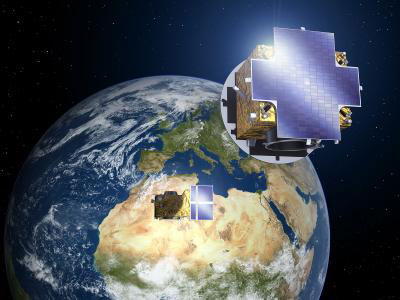 Spanish industry is leading the Proba-3 mission, a world first in precise formation flying. This European Space Agency (ESA) project aims to demonstrate that two satellites can move as one single object with sub-millimetre precision. This configuration will enable the creation of enormous space telescopes with the lens and detector hundreds of metres apart.
Spanish industry is leading the Proba-3 mission, a world first in precise formation flying. This European Space Agency (ESA) project aims to demonstrate that two satellites can move as one single object with sub-millimetre precision. This configuration will enable the creation of enormous space telescopes with the lens and detector hundreds of metres apart.
Apr 16th, 2013
Read more
In an attempt to obtain a comprehensive picture of the solar system's evolution in a much shorter time, mathematicians at the Computing Faculty of the University of the Basque Country (UPV/EHU) have developed new numerical methods which enable simulation calculations to be done faster and more accurately.
Apr 16th, 2013
Read more
Researcher conducts supercomputer simulations to learn impacts on Earth's magnetic field
Apr 16th, 2013
Read more
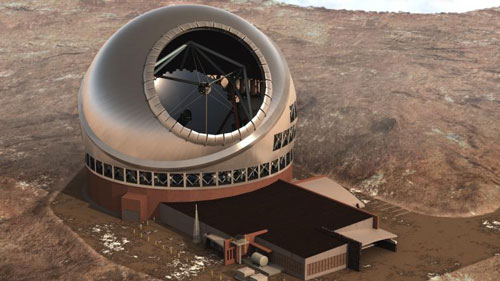 Friday marked another important step forward for the future of astronomical discovery and economic opportunity on Hawaii Island. The Hawaiian Board of Land and Natural Resources (BLNR) announced that it has granted a permit to the Thirty Meter Telescope (TMT) project to build and operate the next-generation observatory near the summit of Mauna Kea.
Friday marked another important step forward for the future of astronomical discovery and economic opportunity on Hawaii Island. The Hawaiian Board of Land and Natural Resources (BLNR) announced that it has granted a permit to the Thirty Meter Telescope (TMT) project to build and operate the next-generation observatory near the summit of Mauna Kea.
Apr 15th, 2013
Read more
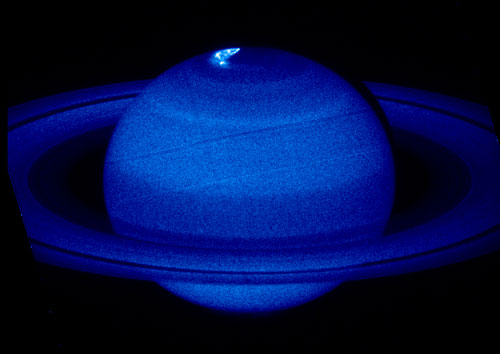 University of Leicester planetary scientists have collaborated with an international team of researchers to organise the largest ever observational campaign of Saturn's auroras.
University of Leicester planetary scientists have collaborated with an international team of researchers to organise the largest ever observational campaign of Saturn's auroras.
Apr 15th, 2013
Read more
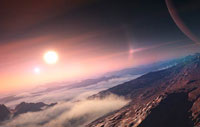 In the light of recent events, where the possibility of buying the rights to name exoplanets has been advertised, the International Astronomical Union (IAU) wishes to inform the public that such schemes have no bearing on the official naming process.
In the light of recent events, where the possibility of buying the rights to name exoplanets has been advertised, the International Astronomical Union (IAU) wishes to inform the public that such schemes have no bearing on the official naming process.
Apr 12th, 2013
Read more
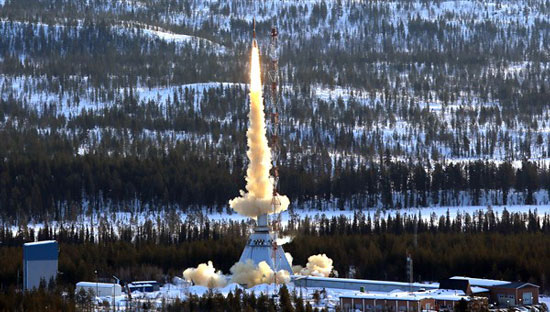 It is the world's longest running rocket programme for conducting research in microgravity, and today it is celebrating an anniversary. Around 35 years after the launch of the first TEXUS mission in December 1977, the 50th TEXUS rocket was successfully launched into space from the Esrange Space Center near Kiruna in northern Sweden on 12 April 2013.
It is the world's longest running rocket programme for conducting research in microgravity, and today it is celebrating an anniversary. Around 35 years after the launch of the first TEXUS mission in December 1977, the 50th TEXUS rocket was successfully launched into space from the Esrange Space Center near Kiruna in northern Sweden on 12 April 2013.
Apr 12th, 2013
Read more
NASA and over 150 partner organizations worldwide will be hosting the International Space Apps Challenge on April 20-21, 2013. The International Space Apps Challenge is a technology development event during which citizens from around the world work together to solve challenges relevant to improving life on Earth and in space.
Apr 12th, 2013
Read more
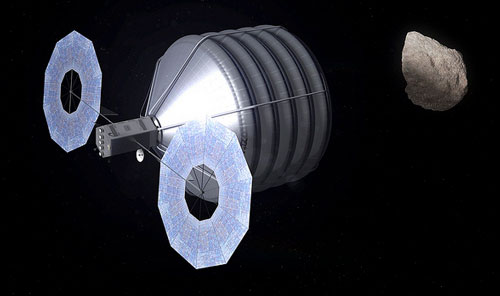 NASA's FY2014 budget proposal includes a plan to robotically capture a small near-Earth asteroid and redirect it safely to a stable orbit in the Earth-moon system where astronauts can visit and explore it.
NASA's FY2014 budget proposal includes a plan to robotically capture a small near-Earth asteroid and redirect it safely to a stable orbit in the Earth-moon system where astronauts can visit and explore it.
Apr 12th, 2013
Read more
 A Cornell researcher and his team have uncovered an oddity in the early cosmos: A newly discovered distant galaxy, born just after the big bang, is starting to furiously churn out stars at peak capacity - despite its young age. The unique galaxy is forming 2,000 times the number of stars as our own Milky Way.
A Cornell researcher and his team have uncovered an oddity in the early cosmos: A newly discovered distant galaxy, born just after the big bang, is starting to furiously churn out stars at peak capacity - despite its young age. The unique galaxy is forming 2,000 times the number of stars as our own Milky Way.
 Subscribe to our Space Exploration News feed
Subscribe to our Space Exploration News feed











